Curious about how to care for the Red Bird of Paradise? This vibrant plant not only brightens up gardens but also has a rich history of uses. From treating illnesses to its significance in different cultures, Caesalpinia pulcherrima is a must-have for those who love colorful, flowering shrubs.
I’ll guide you through the essentials of keeping this plant healthy. Learn about the best soil conditions, how much sunlight it craves, and the right way to water it. I’ll also cover propagation, pruning tips, and how to deal with common pests and diseases.
Ready to make your garden pop with the vivid hues of the Red Bird of Paradise? Our care guide will equip you with the knowledge to nurture this stunning plant. Let’s dive in and ensure your Red Bird of Paradise thrives.
- Related article: Popular Bird of Paradise Varieties
6 Key Takeaways on Red Bird of Paradise
- Red Bird of Paradise, scientifically Caesalpinia pulcherrima, is a vibrant shrub with bright orange-red flowers, attracting hummingbirds and butterflies from spring to summer.
- Originating from South America, the Red Bird of Paradise has a rich history of medicinal uses, including treating ailments and being used for food and dye.
- Proper care of the Red Bird of Paradise involves well-draining soil, regular watering, and ample sunlight.
- Red Bird of Paradise propagation is done through scarified seeds, with regular pruning and pest management essential for a healthy shrub.
- Awareness of the Red Bird of Paradise’s toxicity to pets is important, as ingestion can cause gastrointestinal issues, and mature seeds are toxic.
- Common Bird of Paradise pests like spider mites and aphids, and diseases like root rot, should be monitored and treated promptly.
What Is the Red Bird of Paradise Plant?
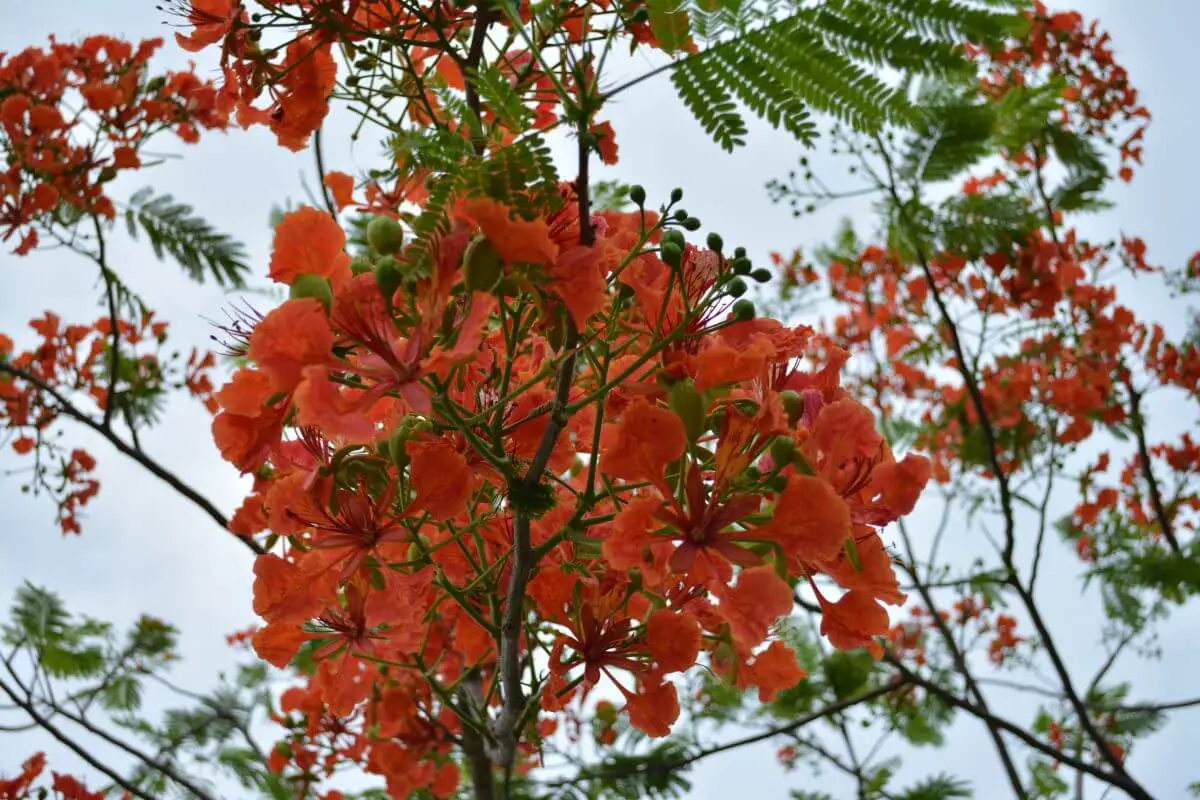
The Red Bird of Paradise or Caesalpinia pulcherrima is an evergreen, broad-leaved shrub with vivid bright red-orange flowers or yellow flowers. It belongs to the Fabaceae (Legume) family and was originally named Poinciana pulcherrima in 1694 by French botanist Joseph Pitton de Tournefort.
By the late 17th century, the Red Bird or Paradise was being grown as an ornamental plant in major botanical gardens across Europe. This included the garden of naturalist Carl Linnaeus in Uppsala.
The plant is known by several names, including the Peacock Flower, the Pride of Barbados, or flos pavonis. It loves a desert-like arid environment and finds its natural habitat in the more arid regions of the tropical regions of Central and South America and the West Indies.
It can be grown easily in USDA hardiness zones 9 through 11 as it loves a hot climate and thrives even in poor soil. It can also be cultivated as a container plant.
Red Birds of Paradise can grow up to twenty feet tall and produce striking colorful blooms until the first autumn frost. The green leaves are lush and fern-like, completing this plant’s showy appearance.
Leaves can grow from 8 to 16 inches in length and will bear three to ten pairs of pinnae, each in turn with six to ten pairs of leaflets.
Interesting Facts About the Red Bird of Paradise
The Red Bird of Paradise, also known as Caesalpinia pulcherrima, is a fascinating plant with a rich history. Native to South America, this plant has been used for centuries for its medicinal properties and other unique uses.
Here are some interesting facts about the Red Bird of Paradise that you might not know:
- Medicinal Uses by Indigenous Tribes – Indigenous tribes in South America used the plant’s juices to treat fever, heal sores, and relieve coughing, chest pain, and breathing difficulties.
- Historical Use for Abortions – The plant’s ability to cause abortions was documented in the 17th century, but indigenous peoples likely used it for this purpose long before.
- Treatment for Convulsions and Worms – Caesalpinia pulcherrima has been used to treat convulsions in children and to control intestinal worms.
- Gastrointestinal Benefits – Tea made from the plant’s flowers, leaves, and small stems is known for its benefits to the gastrointestinal tract, helping with conditions like gastritis and intestinal inflammation.
- External Applications – Externally, it can be used as a wash to soothe rashes, bites, and stings, and relieve poison ivy and chemical sensitivity rashes.
- Different Extract Uses – Different extracts from the plant have been used as an eyewash, mouthwash, insecticide, and to stun fish and execute criminals.
- Culinary Use in Mexico – The plant’s green seed pods are cooked and eaten in Mexico.
- Ink and Dye Production – It has been used to make inks and dyes.
- “Barbados Fencepost” Nickname – The plant is sometimes called “Barbados fencepost” because it is often used as a thick, thorny hedge.
- National Flower of Barbados – Caesalpinia pulcherrima is the national flower of Barbados. Known as “the Pride of Barbados,” it is featured on the national coat of arms.
Red Bird of Paradise Care Guide
When cultivated in home gardens and landscaping, heights will usually range from four to ten feet with its leaves spreading from four to six feet. A rapid grower, its mature size will depend a great deal on the amount of water it receives and how severe the region’s winters are.
Recommended Soil for the Red Bird of Paradise
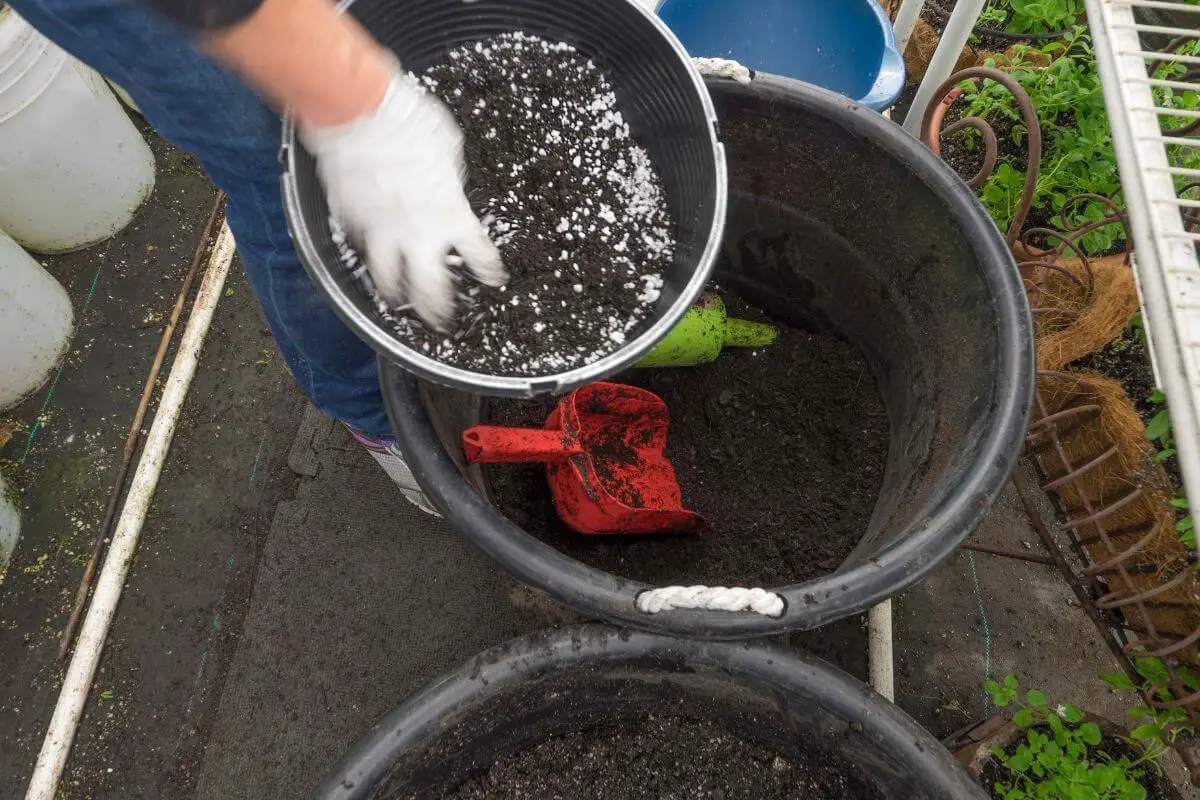
The Caesalpinia pulcherrima will tolerate any soil type as long as its well-draining soil. So it won’t do well with heavy clay soils.
For optimal growth, use a soil mix of Fox Farm Ocean Forest, perlite, orchid bark, and worm castings. Plant at a depth between the yellow and green lines on the stem.
To combat pests like fungus gnats, scrape off the top soil layer or add sand, or use a mixture of dish soap, neem oil, and water as a spray. Space Red Bird of Paradise plants wider than 30 inches to prevent overcrowding.
Best Lighting for the Red Bird of Paradise
The Red Bird of Paradise enjoys full sunlight exposure, although it can be managed with partial shade. Northern exposures should be avoided to ensure successful growth.
The Red Bird of Paradise might be winter deciduous if you are in a cooler location, but if their stems are green during the winter, they are alive and will be back in mid-to-late spring.
If grown indoors as a houseplant, place it near a window with very bright, but indirect light. It’s best to use full-spectrum LED lights. These lights should have a color temperature between 3,000 K and 6,000 K.
Red and blue grow lights might bother your eyes and not look nice, but some people still do well with them. However, for most indoor plants, it’s better to use full-spectrum lights unless you want to make your plants flower.
Water and Humidity Requirements for the Red Bird of Paradise
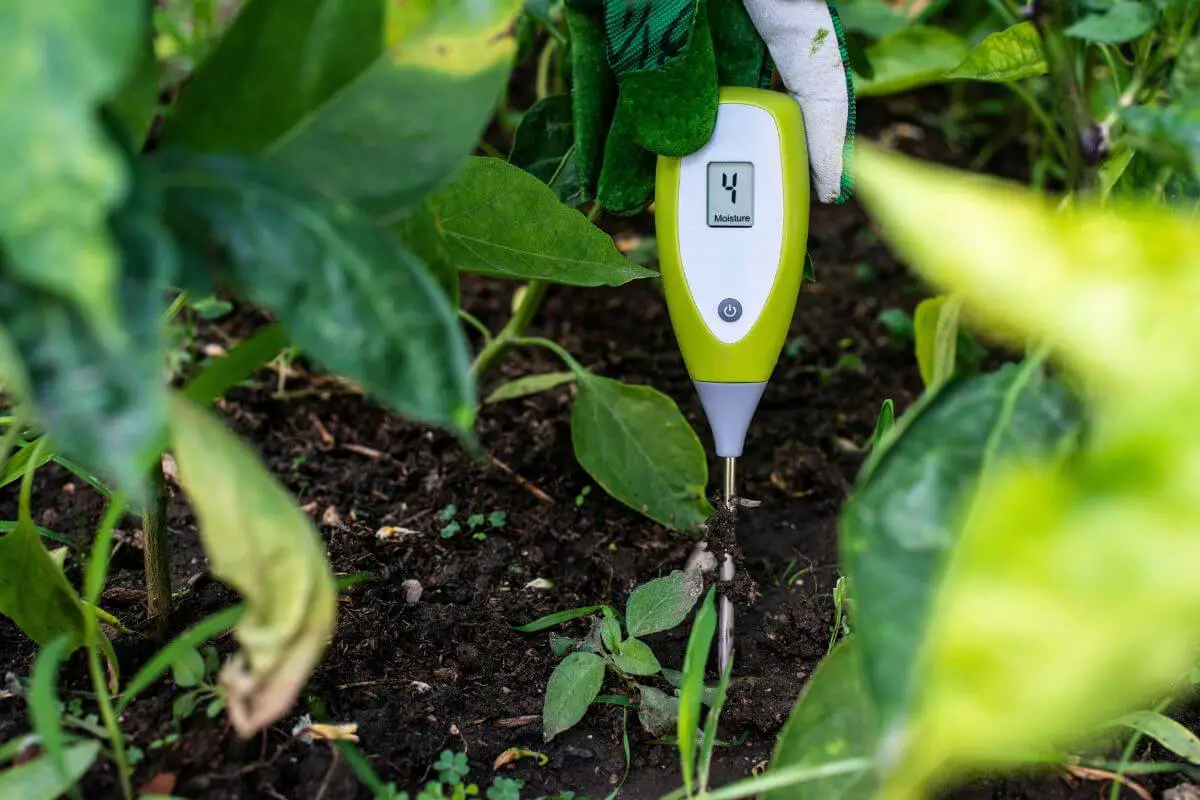
Once the shrub is established, this plant will require at least monthly watering. To enjoy abundant flowering, water the plant weekly during the spring and summer months.
Use a moisture meter to determine when to water, aiming for a moisture level of around 3-4 on a scale of 1 to 10. Insert the moisture meter to a depth of about 2-3 inches, roughly the size of the rootball.
If cultivated in a container, be careful of overwatering. Because this plant is more drought-tolerant, it’s better to be underwatered than overwatered. Wipe dust off the leaves regularly and avoid overwatering to prevent root rot. Also avoid direct sunlight, especially during the acclimation process, to prevent leaf burn.
In the winter months, during its dormant period, reduces watering considerably. To increase humidity, consider using a humidifier or placing a tray with rocks and water near the plant.
Temperature Requirements for the Red Bird of Paradise
The Red Bird of Paradise enjoys higher temperatures similar to a desert. It likes outdoor temperatures that remain above 55°F and in the 70s during the day. It will suffer damage if the temperatures dip to 32°F or lower.
In extremely cold weather, the plant will die back when temperatures fall to below freezing and then will regenerate when spring arrives.
To encourage this, cut the plant down to a few inches from the ground in late winter. If you mulch the plant’s base, it should be adequately protected until the spring comes.
How to Fertilize the Red Bird of Paradise
While fertilizer is not indispensable, it will provide a nutritional boost to your plant. Use a standard liquid fertilizer every two weeks during the growing season in spring and summer.
Water your plant weekly with clean water and a generic fertilizer that includes micronutrients and trace amounts of boron. To prevent chemical burns from tap water, use rainwater or distilled water when possible.
- Read more about Feeding Bird of Paradise Plants
How to Prune the Red Bird of Paradise
When this plant is cultivated as a garden or yard shrub, you will need to prune to remove limbs that have been damaged by frost. You should also prune dead or damaged leaves, and crossing branches.
When flowering is finished for the season, bloom stalks should be trimmed off to impede the seed pods from developing as well as seedlings.
If pods remain on the plant, they will eventually dry and split, and the seedlings will be scattered. Should this happen, you will need to clean up the pods, seeds, and any seedlings for your landscaping to remain tidy.
Propagating the Red Bird of Paradise
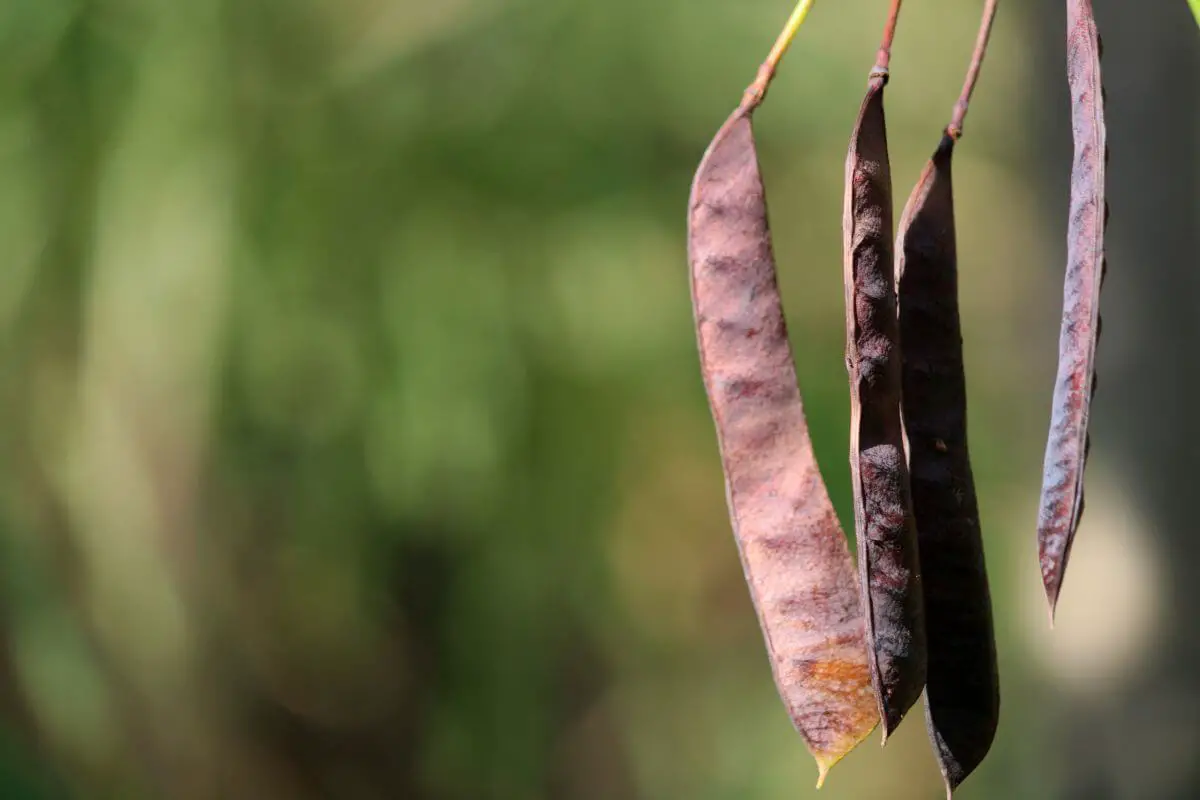
The Red Bird of Paradise can be successfully propagated with seeds. They make flat seed pods, up to 4 inches long (10 cm), with dark brown to black seeds inside. These pods dry up, split open, and sometimes the seeds pop out suddenly.
To start propagating, save seeds from a mature plant by removing bloom stalks immediately when the brown seeds appear in the seed pods.
Then place them in paper bags so that they can dry out completely. Because these seeds have a hard outer shell, they will need to be penetrated through scarification so that germination can be successful.
Simply scrape or nick the surface of the seed with a wood file or sandpaper until you see the color change. Avoid nicking the edge of the seed to prevent damage to the seed’s embryo.
- Read more on how to properly Propagate Your Bird of Paradise
Propagating by Seed
Here are the step-by-step instructions on how to propagate and grow the Red Bird of Paradise from seed:
- Cut the flower stalk as soon as the pod turns brown.
- Place gathered seeds in a paper bag or in the sun to dry.
- Once dry, store the seeds in a sealed glass container in the refrigerator.
- Six weeks before the predicted final frost, remove seeds from the refrigerator and scarify them.
- Soak scarified seeds in warm water for 24 hours; discard any that do not sink.
- Prepare a pot with drainage holes, filled with equal parts seed starter and perlite.
- Place seeds half an inch deep and two inches apart in the pot; lightly water.
- Cover the pot with plastic and keep it at 75°F for germination.
- Keep the potting soil slightly damp.
- After germination, remove the plastic and place the pot in full sun or under a grow lamp.
- When seedlings have four leaves, transplant them into individual peat containers.
- After the final frost, harden seedlings outdoors gradually until they can stay out for six hours.
- Transplant hardened seedlings into the outdoor garden bed.
Red Bird of Paradise Toxicity to Pets
The American Society for the Prevention of Cruelty to Animals website lists the Red Bird of Paradise plant as toxic to cats and dogs. Ingestion can cause diarrhea and vomiting symptoms.
Mature seeds are quite toxic. In case of ingestion, contact your veterinarian or local poison authority immediately.
Red Bird of Paradise Pests, Diseases, and Problems
Be on the lookout for spider mites, scale, and aphids. If leaves turn yellow and begin to drop or foliage is spotted, check for a pest infestation. Use organic Neem oil or insecticidal soap to combat pests. Aphids can be removed by spraying jets of cold water.
Root rot is a problem if drainage is insufficient, or the plant is overwatered.
Red Bird of Paradise Final Thoughts
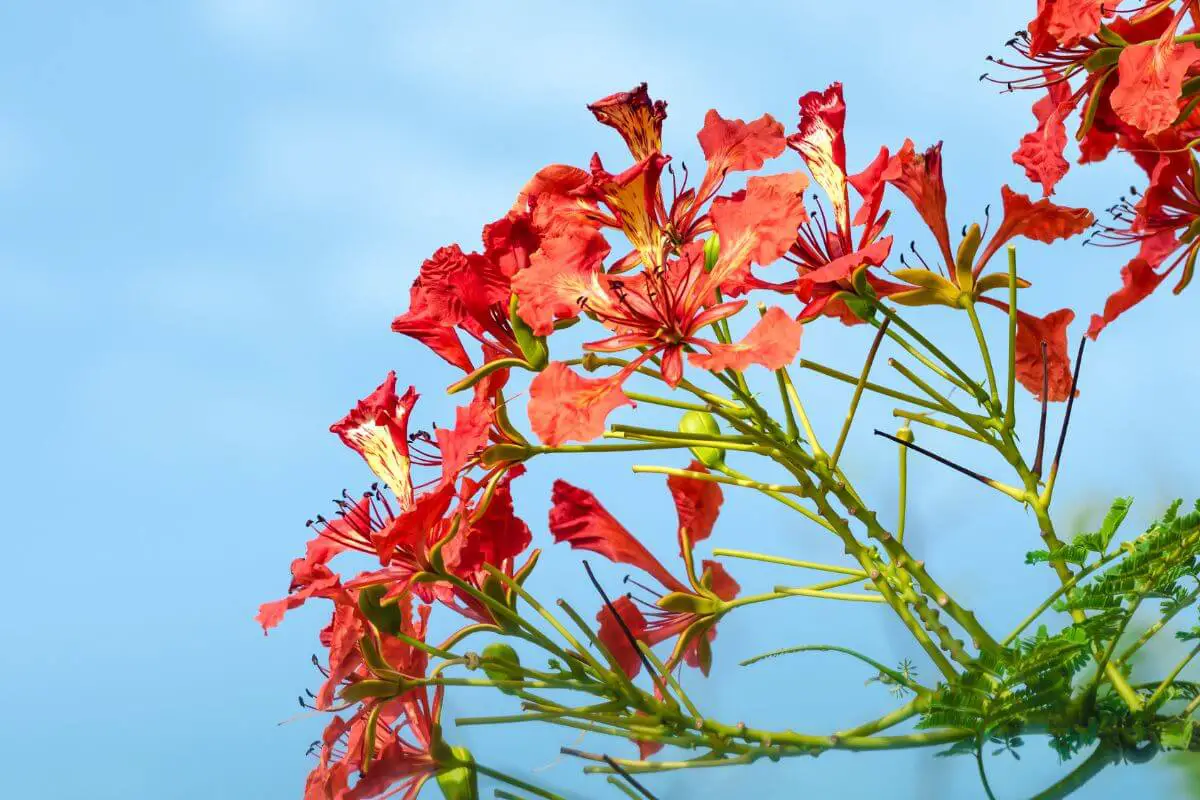
The Red Bird of Paradise (Caesalpinia pulcherrima) is a stunning, low-maintenance shrub that can bring vibrant color and attract pollinators to your garden.
Ensure it has well-draining soil, regular watering, and plenty of sunlight to help it thrive. This plant loves arid environments and grows best in USDA hardiness zones 9 through 11.
If you’re interested in propagating from seeds, you’ll need to scarify them and follow specific germination steps. Regular pruning and keeping an eye out for pests will keep your shrub healthy and beautiful. Remember, though, that this plant is toxic to pets, so take precautions if you have animals.
You can enjoy the beautiful blooms of the Red Bird of Paradise and create a vibrant, pollinator-friendly garden by carefully following this care guide. Happy gardening!
Red Bird of Paradise FAQs
1. What Is Red Bird of Paradise Used For?
People in South America used the plant to help with fevers, heal sores, and help with breathing problems. In Mexico, they cook and eat the green seed pods. Also, they made inks and dyes from the plant and used it as medicine for sore throats, lung issues, and liver problems.
2. Is Red Bird of Paradise Poisonous?
Yes, Caesalpinia pulcherrima is poisonous. The seeds, especially, are dangerous and have made people, especially kids, sick. It has stuff like GI irritants and tannins that can make pets and people throw up and have diarrhea if they eat it.
3. What Are the Different Names of the Red Bird of Paradise?
The Red Bird of Paradise, scientifically known as Caesalpinia pulcherrima, has several common names:
- Red Bird of Paradise
- Barbados Pride
- Barbados Flower Fence
- Dwarf Poinciana
- Peacock Flower
- Poinciana pulcherrima
- Flos pavonis
Learn more about the Bird of Paradise plant with these related articles:


